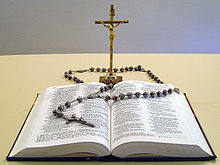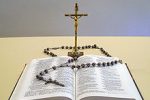CATHOLICISM AND MARY (V)
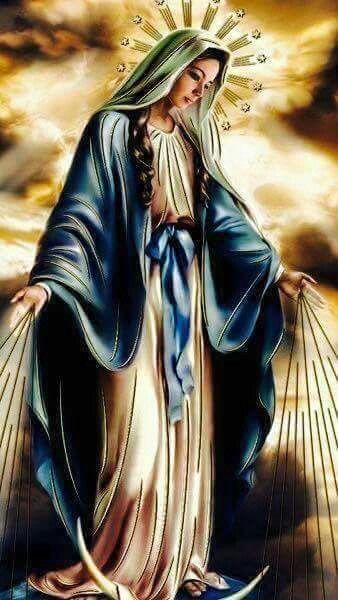
Mary? Aeipartheonos?!
(…continued from part four…)
V. Aeipartheonos, meaning ever virgin (Perpetual Virginity) entered Catholic dogmas in 553 AD of the Second Council of Constantinople and Panagia (Greek: Παναγία, lit. ‘All-holy’). In the 5th century, the Third Ecumenical Council debated the question of whether Mary should be referred to as Theotokos or Christotokos. Theotokos means “God-bearer” or “Mother of God”; its use implies that Jesus, to whom Mary gave birth, is truly God and man in one person. Nestorians preferred another anomalous title Christotokos meaning, “Christ-bearer” or “Mother of the Messiah.” They did not deny Jesus’ divinity, but believed that God the Son or Logos existed before time and before Mary, and that Mary was mother only of Jesus as a human, so calling her “Mother of God” was confusing and potentially heretical. In the year 1198, Catholicism gave Mary the titles: co-redemptrix, advocate, auxiliatrix, adjutrix, mediatrix, believing that as the mother of Christ, she should share in His official responsibilities. I have a question? Who decides who shares in divine attributes, man or the Divinity? Do we call this ecumenical decision an acute scriptural indigence on the part of Catholicism or a blatant gibe at Scripture? Do we not know whose job it is to distribute ecumenical offices in Acts 13:2 “As they ministered to the Lord, and fasted, the Holy Ghost said, Separate me Barnabas and Saul for the work whereunto I have called them?” Read also Acts 20:28, “Take heed therefore unto yourselves, and to all the flock, over the which the Holy Ghost hath made you overseers, to feed the church of God, which he hath purchased with his own blood.” Now do confer 1Corinthians 12:7-11.

Belief in the Assumption (taken up to heaven like Enoch and Elijah) of Mary became widespread across the orthodoxy of the Christian world from the 6th century onward, and is celebrated on 15 August in both the East and the West. The Medieval period brought major champions of Marian devotion to the fore, including Ephraim the Syrian, and John Damascene. The Dogma of the Immaculate Conception, under the Papal conspiratorial supervision, developed within the Catholic Church over time. Cardinal Joseph Ratzinger (later Pope Benedict XVI) suggested a redirection of the whole Church towards the programme of Pope John Paul II in order to ensure an authentic approach to Christology via a return to the “whole truth about Mary, writing, “It is necessary to go back to Mary if we want to return to that ‘truth about Jesus Christ,’ ‘truth about the Church’ and ‘truth about man.'”
How pathetic!

Does Mary use the rosary in her celestial intercessory role?
The twelfth and thirteenth centuries saw an extraordinary growth of the cult of the Virgin in Western Europe, in part inspired by the writings of theologians such as Saint Bernard of Clairvaux (1090–1153). Bernard of Clairvaux was one of the most influential Roman Catholic churchmen of his time. In the “Sermon on the Sunday in the Octave of the Assumption” he gave an irreverent exegesis of Mary’s participation in redemption. Bernard’s Praises on the Virgin Mother was a small but complete treatise on Mariology. Pope Pius XII’s 1953 encyclical agreed with Bernard’s sermon on Mary as “Our Lady, Star of the Sea.” Western types of the Virgin’s image, such as the twelfth-century “Throne of Wisdom”, in which the Christ Child is presented frontally as the sum of divine wisdom, seem to have originated in Byzantium. Theologically, one major controversy of the age was the Immaculate Conception. Anthony of Padua (1195–1231) supported Mary’s freedom from sin and her Immaculate Conception. His many sermons on the Virgin Mary shaped the Mariological approach of a large number of Franciscans who followed his approach for centuries after his death. The encyclical of Pope Pius IX in 1854 attested to Roman Catholic catechism concerning Mary’s Sinlessness and Immaculate Conception.
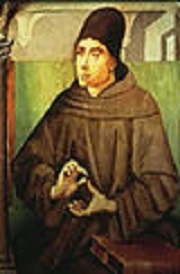
John Duns Scotus
A man called John Duns Scotus said that Mary was redeemed in anticipation of Christ’s death on a cross. Scotus’ defense of the immaculist thesis was summed up by one of his followers as potuit, decuit ergo fecit – God could do it, it was fitting that He did it, and so He did it. Gradually the idea that Mary had been cleansed of original sin at the very moment of her conception began to predominate. By the end of the Middle Ages, Marian feasts were firmly established in the calendar of the liturgical year. Pope Clement IV (1265–1268) created a poem on the seven joys of Mary, which in its form is considered an early version of the Franciscan rosary.
Protestant leaders like Martin Luther and John Calvin, while personally adhering (and erroneously, too) to Marian beliefs like virgin birth and sinlessness, considered Catholic veneration of Mary as competition to the divine role of Jesus Christ. Unbelievably, the Catholic Church believed her engagement in Ottoman Wars in Europe against Turkey were fought and won under the auspices of the Virgin Mary. The victory at Battle of Lepanto (1571) was accredited to her “and signified the beginning of a strong resurgence of Marian devotions, focusing especially on Mary, the Queen of Heaven and Earth and her powerful role as mediator of many graces.” Religious superstition crept, undoubtedly, as you can see, through Catholicism, into the Church!
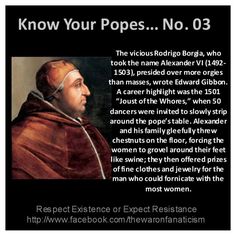
The Jesuit Francisco Suárez (1548-1617) was the first theologian, who used the Thomist method on Mariology and is considered the father of systematic Mariology. Thomism or Scholasticism is defined by Merriam-Webster Dictionary is: ‘a philosophical movement dominant in western Christian civilization from the 9th until the 17th century and combining religious dogma with the mystical and intuitional tradition of patristic philosophy especially of St. Augustine and later with Aristotelianism.’ This must, unfortunately, be fed, doctrinally, into the unsuspecting religious Catholic laity to aid the enshrinement of Mariology.
(…to be continued…)
NB= I’d very much love to read your candid contributions. Thank you!
Read the 4th part here
Click to read the 6th part.
Visits: 118
